2 to 5 year olds

Learning based on interesting and dynamic motor and movement games. We use original materials to work with children, stimulating attention and memory.
Is it possible and does it make any sense to teach foreign languages to the very young? Are there proven methods that should be used to make language classes with the very young not only interesting, but also provide the expected results? Are these methods intended for all children, or is each age group governed by its own rules… or rather forms? These and many other questions we often hear during conversations with parents who wish to additionally support their children with home methods.
Teaching children foreign languages is nothing new. Effective teaching of foreign languages to preschool and primary school children has become an educational priority in modern societies around the world. The classes have been included in school curricula in many European countries for a long time, giving children the opportunity to learn about the linguistic and cultural diversity of our neighbors. However, it is difficult to treat all children learning a foreign language in the same way. More and more often (out loud) there is also talk of an individual learner approach. After all, even 2 months of age difference in the preschool stage can lead to big differences in the child’s development. So how to take into account such an exemplary emotional and intellectual disproportionality when creating a schedule for a group of 2, 3, 4 and 5 year olds?
Children aged 3 and 4 are in the stage of sensory-motor thinking. That is why many tasks are solved through play. The repetition of songs, rhymes or poems still plays an important role. Especially if they can be combined with movement elements., at this age, the communicative aspect becomes significant and should start to form the basis of the teaching process. However, we must remember that children approach language in a very general way. They do not analyse it but focus on its meaning. Children of this age live in a fantasy world. Therefore, it is essential to support their imagination and ability to think creatively. Teachers try to slip gently into their world by handing out, for example, a coloured crayon, pretending it is a magic wand, a knight’s sword or a fishing rod.
Children aged 4-5 are already very independent and also gradually adapt to a fixed schedule of activities. The meaning of the proposed actions takes on a broader meaning. Five-year-olds persistently pursue their goals. That is due to the natural developmental processes of the child. They absorb everything around them. So if they come into contact with a foreign language, they will begin to assimilate it and repeat the words they hear. Just like when you learn your mother tongue. Children clearly and understandably show their emotions and feelings, which they express in behaviour, facial expressions and gestures. This age group is already very dextrous, so language learning should be complemented by the introduction of various types of arts and crafts exercises that will make the classes more attractive and increase their effectiveness.

